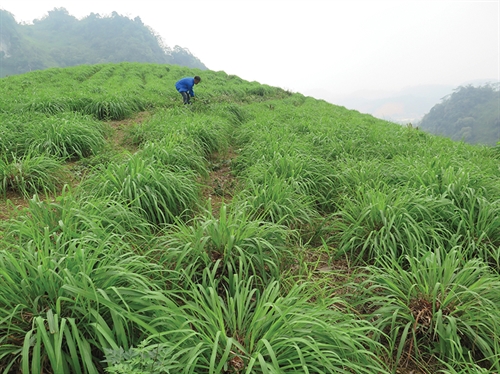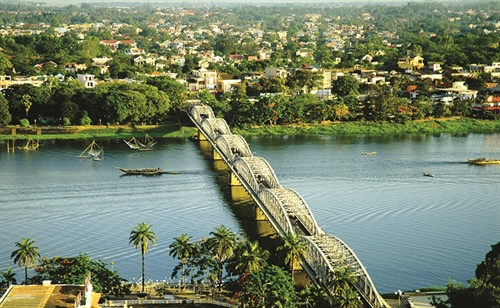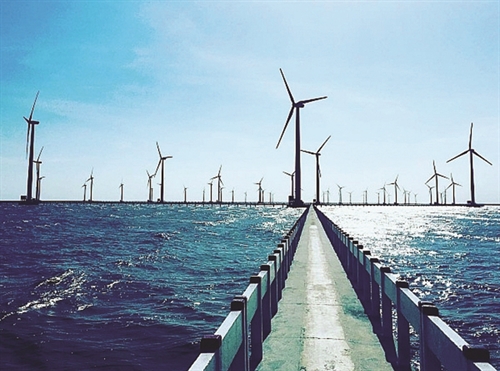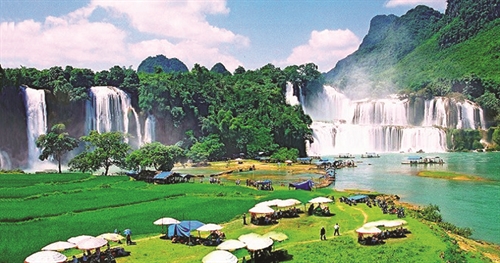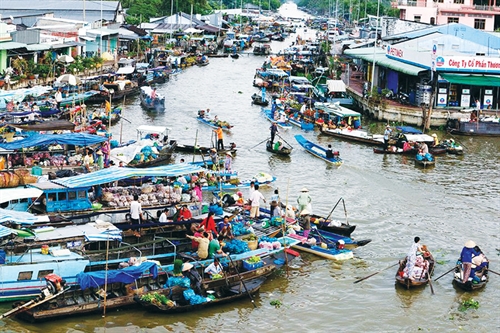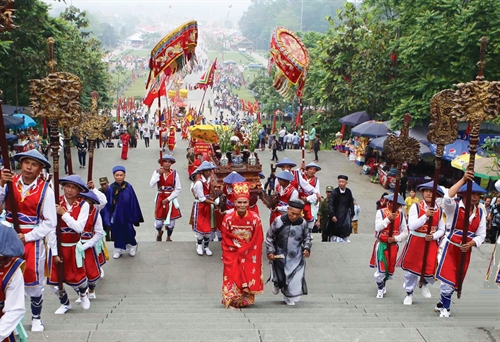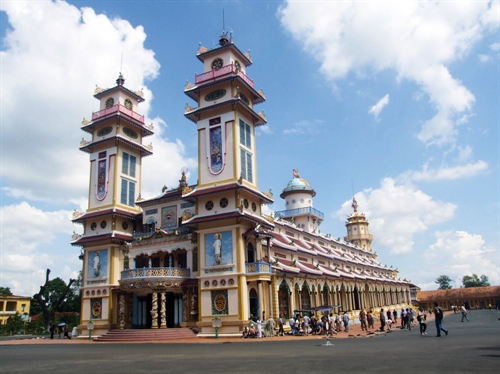Covering 8,310 square kilometers, Lang Son province is located in the northeastern mountainous border and Viet Bac (northern Vietnam) regions which consist of Ha Giang, Tuyen Quang, Cao Bang, Bac Kan, Thai Nguyen and Lang Son provinces. It borders Cao Bang to the northwest, Bac Kan and Thai Nguyen provinces to the west, Bac Giang province to the south, Quang Ninh province to the west and the Zhuang Autonomous Region, Guangxi province of China to the northeast with a borderline of 231km. It has a population of 781,800 (according to statistics released in June 2019) and is home to many ethnic groups, including Nung, Tay, Dao, San Chay, Hoa and Hmong. It has a provincial city with the same name and ten districts of Huu Lung, Binh Gia, Loc Binh, Van Lang, Trang Dinh, Cao Loc, Van Quan, Chi Lang, Bac Son and Dinh Lap.
Lang Son province is the first point in the Vietnamese territory of the Nanning (China)-Lang Son-Hanoi-Hai Phong and the Nanning (China)-Lang Son-Hanoi-Ho Chi Minh City-Moc Bai economic corridors. It is also a gateway connecting Vietnam and other ASEAN countries with China’s Guangxi market and southern China in the China-ASEAN Free Trade Area (CAFTA) through two international border gates (Huu Nghi road border gate and Dong Dang railway border gate), Chi Ma national border gate and nine auxiliary border gates.
At present, the construction of the 43km Chi Lang-Huu Nghi section on the Bac Giang-Lang Son expressway and the 115km Dong Dang (Lang Son province)-Tra Linh (Cao Bang province) expressway and the upgrade of national highway 4B connecting Lang Son and Quang Ninh province in the near future are expected to attract both domestic and foreign investors, develop the province’s real estate market and boost its socio-economic development.
“With a convenient railway and road system connecting Vietnam’s major economic hubs, Lang Son has become a large cargo transshipment gateway of Vietnam and ASEAN member nations to the Chinese market and vice versa,” said Chairman of the provincial People’s Committee Pham Ngoc Thuong.
Lang Son province has received the Asian Development Bank (ADB)’s support via 16 projects on urban and rural infrastructure development, healthcare, education and trade. Based on the province’s needs and development orientations, ADB has proposed key areas for cooperation with the province for the immediate future including cross-border infrastructure development - transport - waste treatment, development of safe agricultural production chains, and urban planning and management. The bank is expected to provide Lang Son with finance, technical expertise and innovations to transform the province into an economic hub of the northeastern region.
With the determination of the provincial Communist Party’s Committee, authorities and people, Lang Son is striving to become one of key dynamic economic regions of the country.
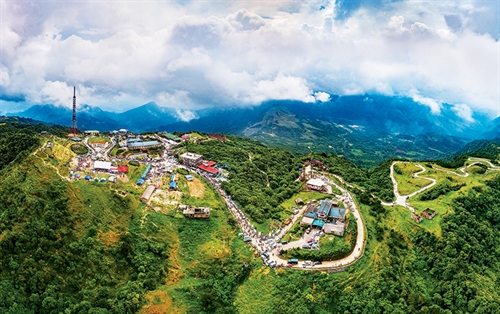 |
| Mau Son mountain is a popular tourist attraction of Lang Son province__Photo: Internet |
FDI attraction
Prime Minister Nguyen Xuan Phuc has suggested Lang Son base its economic development on three pillars: border economy, sustainable tourism and smart agriculture.
In 2018, Lang Son jumped three places to rank 50th among 63 provinces and cities in the provincial competitiveness index (CPI). At present, the province is home to the 394 km2 Dong Dang-Lang Son border-gate economic zone and two industrial parks covering a total area of 761.7 hectares.
To speed up the construction of 10 industrial complexes in the locality by 2030, the provincial People’s Committee has proposed amendments to the Government’s Decree 68 of 2017 on the management and development of industrial complexes and the Law on Organization of Local Administration in its recent dispatch to the Ministry of Industry and Trade. Through the ministry, the province also proposed the Government to provide detailed guidance on the implementation of the Planning Law concerning the development of industrial complexes.
According to the provincial Department of Planning and Investment, Lang Son currently hosts 28 foreign direct investment (FDI) projects totally capitalized at USD 234.68 million.
The province is calling for over VND 45 trillion (USD 1.9 billion) in 37 projects from now until 2025. They include eight projects on industrial park and complex infrastructure, nine on transport and urban infrastructure and ten on trade, services, tourism and sports.
At the Lang Son investment promotion conference 2019, entitled “Lang Son - a successful destination for investors”, on September 30, Chairman Thuong pledged to facilitate investors and businesses and create a transparent business investment environment for long-term local development and prosperity.
Under the provincial People’s Council’s Resolution 12 of 2018 on investment policies, investment projects in the sectors eligible for special investment incentives will enjoy 20-percent reduction of site clearance compensation amounts payable according to the state-prescribed cost table. However, the maximum support level must not exceed VND 20 billion (USD 859,000) for projects occupying at least 100 hectares of land or VND 10 billion (USD 429,500) for those occupying less than 100 hectares.
In the meantime, investment projects in the sectors and fields eligible for investment incentives will receive 50 percent of pre-tax construction costs of infrastructure facilities such as roads, power grids, water pipelines and sewage systems built outside their fences.
The Resolution states that investment projects employing at least 30 percent of local workers will receive support equal to half of total immediate-level vocational education expenses and 70 percent of college-level vocational education expenses.
 |
| A custard-apple festival in Chi Lang district (Lang Son province)__Photo: Internet |
A fairy tale tourist destination
Lang Son province is well-known for stunningly beautiful landscapes including Tam Thanh cave, To Thi mountain, and Mau Son mountain range, which is known as a famous tourist destination and considered a second Sa Pa of the north, and other historical relic sites, including the Mac dynasty citadel, Bac Son safety zone in the resistane war and Chi Lang mountain pass.
The province is also famous for sweet “Then” singing and unique indigenous cultural festivals such as the Tam Thanh pagoda festival that takes place on the 15th day of the first lunar month, Ky Cung-Ta Phu festival that takes place from the 22th to the 27th day of the first lunar month, and Dong Dang festival that takes place on the 10th day of the first lunar month.
Lang Son has a cool year-round climate that is favorable for the development of its famous fruits and products such as star anise, Mau Son and Bao Lam peaches, Chi Lang custard apples, Binh Gia plums, Bac Son tangerines and Trang Dinh apricots.
Lang Son has two five-star and one three-star hotels and hundreds of guest houses rated three-five stars.
The province welcomed 19,700 foreign tourists in October this year, bringing the total number of foreign arrivals to the province in the past ten months to 372,600 and the 10-month tourism turnover of VND 1.07 trillion (USD 45.9 million), Hoang The Vinh, deputy director of the Lang Son Culture, Sports and Tourism Department told the Vietnam Law and Legal Forum magazine.
This year, the province organized the eleventh tourism program entitled “Through Viet Bac Heritage Sites” from November 3 to 5. The annual program is expected to promote tourism cooperation and attract domestic and foreign tourists.
During the three-day event, conferences and exhibitions introducing destinations, promoting cultural and tourist products of Viet Bac region and Guangxi province of China and Viet Bac tour guide contests were held.
In addition, the Lang Son Tourism Promotion Information Center has printed and distributed a book on Lang Son; and brochures and leaflets on Mau Son tourism and Quynh Son community-based tourism; and made video clips on Lang Son cuisine and landscapes in both Vietnamese and English. Tourist information on Lang Son can be found at htttp://www.dulichlangson.com.vn.
In May, the Prime Minister approved the province’s master plan on building the Mau Son national tourist site into a center for cultural, spiritual and ecological tourism of the northern mountainous region and the country by 2040.
The province is projected to record year-on-year increases of 5.1 percent in the number of foreign holiday makers or 452,000 and 25.1 percent in tourism revenues or more than VND 1.2 trillion (USD 52.6 million).
Lang Son sets a target of receiving 3.1 million tourist arrivals, including 460,000 foreigners, and raking in a tourism turnover of VND 1.3 trillion (USD 55.8 million) by 2020.
In the coming time, the hospitality sector will exploit the advantages of the Nanning-Lang Son-Hanoi-Hai Phong-Quang Ninh economic corridor to boost tourism and maintain tourism cooperation with the Zhuang Autonomous Region, the Republic of Korea and Japan.
Apart from existing tours such as self-drive tour through Huu Nghi border gate, the sector will expand community-based tourism models in Bac Son district.-

